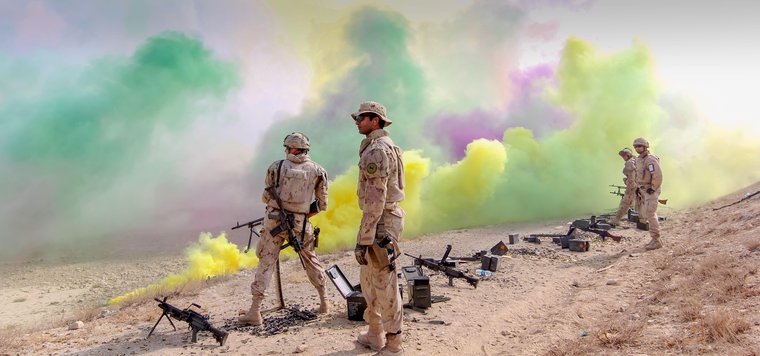Afghans Left to Pick up the Pieces of the West’s Failed War
CENTRAL ASIA, 12 Jul 2021
Paul Rogers | Open Democracy - TRANSCEND Media Service
As the Taliban rapidly expand in the shadow of US and NATO allies’ retreat, has anyone considered the impact on innocent civilians?

Afghans are at the mercy of the Taliban as US troops no longer work in Kabul.
| Boris Lovric/Alamy Stock Photo. All rights reserved
3 Jul 2021 – Military leaders in the United States and Britain, as well as allied countries, now accept that they have lost their war with the Taliban.
When US President Joe Biden confirmed his predecessor Donald Trump’s decision to withdraw from Afghanistan, this was tacit acceptance of a position that is rarely stated so bluntly in public. Although General Austin S Miller, the US commander in Afghanistan, came close this week when he admitted it was worrisome that as his troops pull out, there has been a rapid loss of districts throughout the country to the Taliban.
Following the US lead, other NATO countries are also leaving quickly. The last 200 troops of the British contingent, from the 3rd battalion, Royal Regiment of Scotland, (the Black Watch) are also expected to leave shortly after a final flag-lowering ceremony. This will end a 20-year deployment by the UK, which has left 456 troops dead and thousands injured, with many of the latter suffering life-changing physical and mental consequences.
Almost all the other foreign troops have left, quietly and without ceremony. Most were there as small detachments of a handful of troops working on specific tasks. The larger groups, from Germany, Italy and Poland, have all gone, as have smaller units from Georgia, Romania, Denmark, Estonia, the Netherlands, Spain, Sweden, Belgium, Portugal, the Czech Republic, Slovenia, Finland, Albania, North Macedonia and Luxembourg.
Only Turkey plans to keep a sizeable deployment in the country for the specific task of protecting Hamid Karzai International Airport in Kabul. This may turn out to be a key task in the face of more conflict, no doubt part of Ankara’s determination to extend its influence in Central Asia.
Taliban biding their time
For the Americans, the largest US military base, Bagram, which is 50 kilometres north of Kabul and was originally a Soviet-era construction, was handed over to the Afghans on 1 July, three days before US Independence Day. All but the few remaining for diplomatic protection should be gone by late July.
In a sign of the Pentagon’s concern to complete the withdrawal safely, a second aircraft carrier battle group has been sent to the region. Led by the USS Ronald Reagan, it will join the USS Dwight D Eisenhower group, after the Eisenhower group’s three-month deployment was recently extended.
By moving a second carrier battle group within range of the country, the US has all the conceivable capacity it needs to maintain security during the withdrawal. However, this may turn out to be pointless because the Taliban are showing little interest in fighting US troops, instead concentrating on the Afghan government’s forces. This has been the situation for the best part of a year; their strategy being to avoid any attacks on foreign forces and just bide their time until the Americans and others leave and they can take over.
Afghan militias are being formed to take on the Taliban and are preparing to fight.
The Taliban have even surprised themselves with the speed at which they have been taking over districts throughout Afghanistan. When Biden announced the withdrawal on 1 May, the Taliban controlled 73 of the country’s 407 districts – and they have taken over another 69 since then.
They also have territorial control of many other parts of Afghanistan, including rural areas close to the capital, Kabul. They are already contesting most of the districts that they do not control, and while the government still holds provincial capitals, some are already under pressure.
The general assumption now is that the Taliban will easily take over the country before the end of the year, but this is far from certain for two reasons. One is that as they have advanced, so militias have been formed that are ranged against them, either under the control of powerful interests or to protect vulnerable minorities. Of the former, many are linked to warlords with family histories going back decades and include regional strongmen, who are determined to hang on to their power bases, especially in the north.
Some of these were at least partially integrated into Kabul politics after 9/11 but, with the possibility of a Taliban takeover, they are now looking to their own longer-term interests and preparing to fight.
Among the minorities, the most notable are the Hazaras, a Persian-speaking ethnic group who have long been persecuted, and recently suffered heavy casualties in attacks that were reportedly carried out by elements linked to Isis. They make up a tenth of the population of Afghanistan, mostly living in central mountainous districts, with some in western Kabul. The great majority of Hazaras are Shi’a Muslims and the fear of a Taliban takeover is deeply embedded, so much so that militias are being trained and armed to withstand future Taliban actions.
Civilians left to suffer
The second reason for questioning an easy path to power for the Taliban is the determination of the Americans to prevent a future Taliban government hosting Isis or al-Qaida groups, some of whom are already active in the country. If that were to happen, the Pentagon would likely launch military action through special forces and CIA rather than ground troops.
As remote warfare becomes the dominant response to those threatening Western interests, standard US tactics now involve aircraft and drones firing stand-off missiles, private security contractors and support for militias. This is the same for other major states whenever threats arise and will be the case in Afghanistan. It is a pattern of control also being attempted against jihadi groups across the Sahel and East Africa as Isis and al-Qaida increase their influence there.
Left out of this strategy, of course, are the millions of ordinary people trying to just live their lives in peace, whether in Afghanistan, Burkina Faso, Mozambique, or a dozen other countries.
This major change in international insecurity is unfolding without much acknowledgement or debate in the US – even less so in Britain – and precious little concern, even though the people of Afghanistan and other countries are left trying to pick up the pieces from the West’s failed wars.
_______________________________________________
 Paul Rogers is professor in the department of peace studies at Bradford University, northern England and writes a monthly briefing for the Oxford Research Group. His latest book is Irregular War: ISIS and the New Threat from the Margins (IB Tauris, 2016), which follows Why We’re Losing the War on Terror (Polity, 2007), and Losing Control: Global Security in the 21st Century (Pluto Press, 3rd edition, 2010). He is on Twitter at: @ProfPRogers
Paul Rogers is professor in the department of peace studies at Bradford University, northern England and writes a monthly briefing for the Oxford Research Group. His latest book is Irregular War: ISIS and the New Threat from the Margins (IB Tauris, 2016), which follows Why We’re Losing the War on Terror (Polity, 2007), and Losing Control: Global Security in the 21st Century (Pluto Press, 3rd edition, 2010). He is on Twitter at: @ProfPRogers
Tags: Afghanistan, Anglo America, Arms Industry, Central Asia, Conflict, Geopolitics, Hegemony, Imperialism, International Relations, Invasion, Military Intervention, NATO, Occupation, Pentagon, Politics, Power, Taliban, US Military, USA, Violence, War, War on Terror, West
DISCLAIMER: The statements, views and opinions expressed in pieces republished here are solely those of the authors and do not necessarily represent those of TMS. In accordance with title 17 U.S.C. section 107, this material is distributed without profit to those who have expressed a prior interest in receiving the included information for research and educational purposes. TMS has no affiliation whatsoever with the originator of this article nor is TMS endorsed or sponsored by the originator. “GO TO ORIGINAL” links are provided as a convenience to our readers and allow for verification of authenticity. However, as originating pages are often updated by their originating host sites, the versions posted may not match the versions our readers view when clicking the “GO TO ORIGINAL” links. This site contains copyrighted material the use of which has not always been specifically authorized by the copyright owner. We are making such material available in our efforts to advance understanding of environmental, political, human rights, economic, democracy, scientific, and social justice issues, etc. We believe this constitutes a ‘fair use’ of any such copyrighted material as provided for in section 107 of the US Copyright Law. In accordance with Title 17 U.S.C. Section 107, the material on this site is distributed without profit to those who have expressed a prior interest in receiving the included information for research and educational purposes. For more information go to: http://www.law.cornell.edu/uscode/17/107.shtml. If you wish to use copyrighted material from this site for purposes of your own that go beyond ‘fair use’, you must obtain permission from the copyright owner.